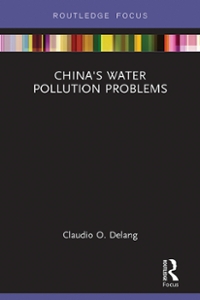Please explain in detail Thank ou
MULTIPLE CHOICE (20*3=60 points). Choose the one alternative that best completes the statement or answers the question. Clothing (units per week) 20 .G . D 10 10 20 Food (units per wook) Figure 3.1.1 1) Refer to Figure 3.1.1 above. On the assumption that the consumer prefers more to less, which of the 1) following baskets are preferred to market basket A? A) B and D B) B and E C) Only E D) Only B 2) Refer to Figure 3.1.1 above. Relative to market basket A, which market baskets would compensate 2) for the loss of one good with the gain in the other, so that total utility from any of these baskets would be the same? A) Only E B) B and E C) G and E D) B and D 3) A curve that represents all combinations of market baskets that provide the same level of utility to 3) a consumer is called A) an indifference curve. B) a demand curve. C) a budget line. D) an isoquant. 4) Satisfaction from consumption is maximized when: 4) A) marginal benefit equals marginal cost. B) marginal benefit is maximum. C) marginal cost equals zero. D) marginal benefit equals zero. 5) An individual consumes only two goods, X and Y. Which of the following expressions represents 5) the utility maximizing market basket? A) Px/Py = money income. B) MRSxy = money income. C) MRSxy = Px/PY. D) MRSxy is at a maximum. E) all of the aboveConsider the following three market baskets: Table 3.1 6] Refer to Table 3.1. If preferences satisfy all four of the basic assumptions: A) B is on the same indifference curve as C. B) A is preferred to C. C) A is on the same indifference curve as B. D) B is preferred to A. E) Both A and B answer choices are correct. 7] The theory of consumer behavior assumes that consumers can compare and rank all possible market baskets. This assumption is called: A) transitivity. B) nonsatiation (more is preferred to less]. C) completeness. D) rationality. 8] After a good falls in price, consumers will tend to buy more of the good that has become cheaper and less of those goods that are now relatively more expensive. This fact is called: A) the income effect. B) the substitution effect. C) the wealth effect. D] the price effect. 9] When demand is inelastic, an increase in price leads to: A) no change in total expenditures. B) a decrease in total expenditures. C) an increase in total expenditures. D) an undetermined change in expenditures. 10) After a good falls in price, consumers are better off because they can buy the same amount of the good for less money, and thus have money left over for additional purchases. This fact is called: A) the income effect. B) the substitution effect. C) the wealth effect. D) the price effect. 11) In a production process, all inputs are increased by 10%; but output increases less than 10%. This means that the firm experiences: A) increasing returns to scale. B) negative returns to scale. C) decreasing returns to scale. D) constant returns to scale. 12) An isoquant: A) is a curve that shows the maximum total output as a function of the level of labor input. B) cannot have a negative slope. C) is a curve that shows all possible output levels that can be produced at the same cost. D) must be linear. E) is a curve that shows all the combinations of inputs that yield the same total output. 6) 3] 91 10) 11) _ 12) _ alum l-llnf than K) Figure 6.4.1 13) Refer to Figure 6.4.1 above. According to the diagram below, where each isoquant's output level is 13) marked to the right of the isequant, production is characterized by: A) increasing, constant and decreasing returns to scale. B) increasing returns in scale. C) constant returns to scale. D) decreasing returns to scale. Clothing (units por month) C D Food junits pur month) Figure 4.2.1 14) Refer to Figure 4.2.1 above. Which of the following moves represents the substitution effect? 14) A) The move from Fj to E B) A move from Fj to F, and then to E C) The move from F1 to F2 D) The move from E to F2 15) Refer to Figure 4.2.1 above. Which of the following moves represents the income effect? 15) A) A move from F1 to F2 and then to E B) The move from E to F2 C) The move from F1 to F2 D) The move from F1 to E 16) Refer to Figure 4.2.1 above. Starting at point A, which of the following moves represents the total 16) effect of a price change? A) A move from F1 to F2 and then to E B) The move from F1 to E C) The move from F1 to F2 D) The move from E to F217] Which of the following is NOT an expression for the cost minimizing combination of inputs? 17) A) MRTS = MPL MK B] W = 1%?er C) MPUMPK = wfr D) MRTS = Wi'r E] none of the above Capital 1.3:\ESSAY (2*20=40 points). Write your answer in the space provided. 21) The short-run cost function of a company is given by the equation T C = 400 + 65g, where TC is the total cost and q is the total quantity of output. a. What is the company's xed cost? b. If the company produced 100 units of goods, what would be its average variable cost? c. What would be its marginal cost of production? (1. If the company produced 100 units of goods, what would be its average xed cost? e Suppose the company borrows money and expands its factory. Its xed cost rises by 50, but its variable cost falls to 45 per units. Write the new cost equation












